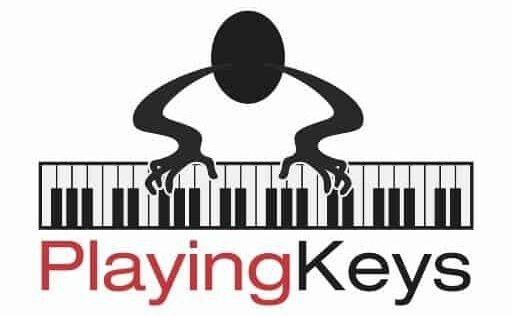Embarking on the journey of jazz piano doesn’t have to be overwhelming. With the right selection of easy jazz standards, you can begin to understand the genre’s structure and nuances while enjoying some of the most timeless melodies.

These compositions serve as an accessible gateway, introducing you to the world of improvisation and chord progressions commonly found in jazz.
Knowing a few easy jazz standards can also prepare you for diving deeper into more complex compositions.
Basics of Jazz Standards
Jazz standards serve as the cornerstone of jazz repertoire, providing a framework that allows musicians to improvise and express themselves. They’re essential for any jazz pianist looking to grasp the rich history and intricate musical theory of jazz.
History and Origin
Jazz standards are musical compositions that are widely known, performed, and recorded in the jazz community. They often originate from the early 20th century, a period marked by significant musical innovation.
Key periods include the Swing era, the Bebop era, and the Post-Bop era, in which many standards were first popularized. This repertoire provided a shared language among jazz musicians, allowing for spontaneous creation and collaboration.
Key Definitions
- Jazz Standard: A jazz composition that is widely accepted and played by jazz musicians globally.
- Jazz Tune: A melody that is used as the basis for improvisation.
- Jazz Repertoire: A collection of jazz standards and tunes that a musician knows and is prepared to play.
- Jazz Song: A piece of jazz music, typically with both a melody and lyrics.
- Easy Jazz Standards: Simpler compositions that are often recommended for beginners due to their straightforward chord progressions and memorable melodies.
Music Theory Fundamentals
To fully understand and perform jazz standards, you’ll need a grasp on certain music theory concepts. This includes:
- Chord progressions: The sequence of chords over which improvisation occurs. Example: The ii-V-I progression is the backbone of many jazz standards.
- Form: Most jazz standards follow forms like the 12-bar blues or 32-bar AABA. These are the overall structures that outline the chord progressions.
- Improvisation: The spontaneous creation of melody within the framework of a tune. In jazz standards, improvisation is guided by the harmony and form of the composition.
- Melodic interpretation: Jazz musicians often embellish or alter melodies to inject personal style into a performance.
With these basics in place, you’re set to dive deeper into the world of jazz standards.
Popular Jazz Standards for Pianists
Discover a selection of jazz standards that are essential for any pianist looking to delve into the world of jazz. These pieces come from a rich heritage of classic tunes and the more modern stylings of modal jazz and bossa nova.
Classic Standards Overview
These timeless pieces form the backbone of jazz repertoire for pianists:
- “Autumn Leaves”: With its haunting melody, it’s a staple for understanding chord progressions.
- “Misty”: Erroll Garner’s ballad offers rich harmonies perfect for exploring emotional depth.
- “Fly Me to the Moon (In Other Words)”: This classic provides an upbeat rhythm perfect for honing your swing feel.
- “Satin Doll”: This Duke Ellington favorite introduces swing and a variety of chord changes.
- “My Funny Valentine”: A Rodgers and Hart masterpiece that challenges expressive ballad playing.
- “Body and Soul”: A chance to dive into complex chord changes and emotive playing.
- “Night and Day”: A Cole Porter song with a memorable melody that weaves through sophisticated harmonies.
- “It Could Happen to You”: A Jimmy Van Heusen tune with a cheerful swing and accessible chord changes for budding jazz pianists.
Contemporary Selections
Moving beyond the classics, you’ll encounter:
- “So What”: From Miles Davis’s iconic album “Kind of Blue,” this piece is a gateway to modal jazz.
- “All the Things You Are”: A composition testing your ability with intricate harmonies and key changes.
Immerse yourself in these tunes to grasp the evolution of jazz through the 20th century.
Modal and Bossa Nova Selections
For a taste of the different flavors in jazz, you might want to explore:
- “Blue Bossa”: A Kenny Dorham piece blending easy bossa nova grooves with approachable improvisation for starters.
- “Rhythm Changes”: A progression stemming from George Gershwin’s “I Got Rhythm” that underpins countless tunes.
These pieces will give you a solid foundation in jazz’s diverse rhythms and styles.
Jazz Piano Chords and Progressions
Mastering jazz piano requires a solid grasp of chords and chord progressions. These form the foundation for playing standards and improvising with other musicians.
Basic Chords for Starters
If you’re new to jazz piano, focus on the essential chord types:
- Major Chords: Formed by the 1st, 3rd, and 5th notes of a major scale.
- Minor Chords: Created using the 1st, flat 3rd, and 5th notes of a major scale.
- Dominant 7th Chords: Combine the 1st, 3rd, 5th, and flat 7th notes of a major scale.
Start by practicing these chords in various keys to build your familiarity with their shapes and sounds.
Advanced Chord Techniques
Once you’ve got the basics down, you can move on to more complex chords:
- Major 9th Chords: Add the 9th note of the scale to a major 7th chord.
- Diminished Chords: Use a combination of minor third intervals.
Using these advanced chords not only adds more color to your playing but also bridges chord changes smoothly.
Applying Chords to Standards
To apply your chord knowledge, work on the 2-5-1 chord progression, which is prevalent in many jazz standards:
- ii Chord: A minor 7th chord built on the second scale degree.
- V Chord: A dominant 7th chord built on the fifth scale degree.
- I Chord: A major 7th chord built on the first scale degree.
For example, in the key of C, you’d play Dm7, G7, and Cmaj7. Practicing these progressions in different keys prepares you to play a wide array of jazz standards.
Principles of Jazz Improvisation
Improvisation in jazz is not just about playing random notes; it’s a structured approach to creativity utilizing melodic ideas, rhythmic variation, and a unique jazz language.
Approaches to Improvisation
When improvising, you’re essentially having a conversation with other musicians and the audience. Start with simple melodic ideas based on the scale or modes relevant to the tune you’re playing. Consider these as your building blocks.
- Melodies: Use the original melody as a reference point and then create variations, altering notes or rhythm slightly.
- Rhythms: Jazz thrives on rhythm. Practice common patterns like swinging eighth notes, triplets, and syncopation to add a groovy, “swinging” feel to your improv.
Improvisation as a Jazz Language
Jazz language is a collection of melodic phrases, standard licks, and patterns that jazz musicians use to communicate. Think of it as a vocabulary you can draw from.
- Licks and Patterns: These are like common phrases in a language, familiar to listeners, and useful to articulate musical ideas.
- Listening: Spiral your jazz comprehension upwards by listening to the greats. You’ll pick up on common language and execution styles.
Practical Exercises for Mastery
To master jazz improvisation, embed practical exercises into your daily practice routine.
- Transcribe Solos: Take a solo you admire and learn it by ear. This will improve your musical ear and enrich your jazz vocabulary.
- 12-Key Practice: Practice improvising in one key first, then experiment by transposing the same lines into various keys.
Frequently Asked Questions
Here are the answers to some common questions that can help you smoothly dive into the world of jazz piano.
What are some beginner-friendly jazz piano standards?
If you’re just starting out, you’ll want tunes with simple structures and memorable melodies. “So What” by Miles Davis and “The Girl from Ipanema” by Antônio Carlos Jobim are great starting points. Both have a relatively uncomplicated chord progression, which is essential when you’re getting familiar with jazz piano.
Which jazz standards have simple chord progressions for piano?
Standards like “Blue Bossa” by Kenny Dorham and “Autumn Leaves” by Joseph Kosma offer straightforward harmonic progressions suited for beginners. Their repeating chord sequences allow you to practice and get comfortable with jazz harmony.
What are some easy blues jazz standards to learn on piano?
Blues-influenced jazz standards like “C-Jam Blues” by Duke Ellington or “Blue Monk” by Thelonious Monk have repetitive blues patterns that are ideal for novices. They give you a taste of jazz’s improvisational nature while sticking to a comfortable 12-bar blues structure.




